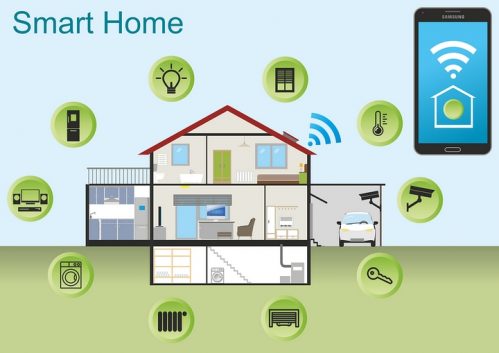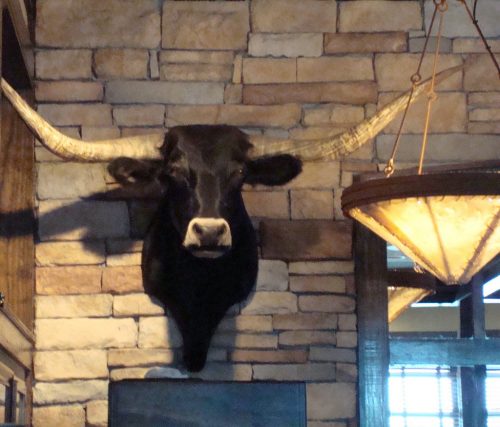
When it’s time to sell your home, you can invest a ton of time, energy and money into getting the place ready for sale. You might declutter, stage and even remodel the house to make it as appealing to buyers as possible.
Sometimes, though, no amount of preparation can overcome something in the home that, rightly or wrongly, offends some buyers and gives them negative impressions of you and your house. These potentially troublesome items create a dilemma for real estate agents, says Maura Neill, a REALTOR® in Alpharetta, Ga.
“We tell our seller clients to depersonalize a house,” Neill explains. “You want buyers to feel as though they could make themselves at home, move in and be comfortable.”
The risk of ignoring the agent’s advice is considerable. Buyers “may turn around and leave,” Neill says. With that in mind, here are seven things that might offend buyers and result in fewer offers.
Live Animals
Believe it or not, some sellers keep live, unclean and potentially dangerous animals in homes for sale.
Wendy English, a former real estate sales manager in Medfield, Mass., recalls an uncaged rabbit that she says was “disgustingly smelly” and would chase people and try to bite them when they entered the home. “The homeowner just loved the rabbit, didn’t see any problems with it, thought it was the cutest pet ever and was maybe immune to the smell,” English says. “The rabbit was definitely horrible.”
Courtney Self, a broker/owner in Torrance, Calif., experienced what might have been an even worse situation. “I had a listing with monkeys that flung their feces when we would show the house,” she says.
Animal-Head Trophies
Dead animals also can be problematic.
Barry Bevis, a broker/owner in Tallahassee, Fla., recalls a for-sale home that had a “trophy” room over the garage. “The pictures of the house (online) had these giant elk heads and deer heads,” he says. “It’s better to leave it out. You’re going to offend too many people.”
By the way, not everyone loves pets either, so food bowls, litter boxes, play toys and the like should be removed from a home when it’s on the market, Bevis says. “Many people are allergic to animals or feel like the animals cause too much wear and tear,” he explains. “If you have any evidence of pets in your property, it’s going to turn off a large segment of buyers.”
Flags
“You never expect to see a Nazi flag hanging on the wall,” says Neill, “but we walked into a seemingly vanilla suburban house and into what appeared to be a teenager’s bedroom and there was a giant flag with a swastika on it hanging on the wall.”
Indeed, any sort of emotionally charged or polarizing display like, say, a Confederate flag, can also be offensive. “There’s a debate about whether it’s heritage and pride or racism and bigotry,” Neill says. “Depending on who you talk to, you get a different answer.”
Bevis recalls an incident when such a flag created a negative impression. “I was showing a house to an African-American couple,” he says. “I opened the lockbox and the key was (stamped with) a Confederate battle flag. It really did turn these folks off just a little bit. Immediately they didn’t like the people selling the house.”
Sports Memorabilia
Sports team rivalries fuel strong emotions, and a seller’s spirted support of the “wrong” team can create a sour impression.
“Having your house decked out in your team might not offend buyers, but it will color the way they think about that house,” Neill says. “It’s usually not (just the owner’s) team’s stuff. It’s also stuff making fun of their rivals. Buyers don’t want to walk into a house that’s berating their team.”
English says long-distance relocating buyers (known as “relos”) are most likely to be put off. “Relos will come in and see Patriots stuff, Red Sox stuff, and it does rub them the wrong way,” she says. “Sellers don’t necessarily realize how strongly someone might react to their favorite team.”
Nudity
Whether it’s baby pictures, artwork or pornography, nudity makes some buyers uncomfortable. In some cases, sellers don’t realize they’ve exposed too much information. In others, sellers want to make a statement, even if it’s at their own expense.
“Anybody who has a tasteful painting usually will get the reasoning that it makes sense to take it down,” says English. “The not-tasteful stuff, I think those people are going for the shock value, which doesn’t help sell the house.” Self offers a few examples of things she’s seen in for-sale homes: a statue of male genitalia next to a bed, wallpaper patterned with nude women in a guest bathroom and a drunk heir (yes, a live person), shirtless and passed out on the floor.
Mystery Rooms
When buyers want to see a for-sale house, they expect to see the whole house, not just parts of it. That makes a locked room a big turnoff, English says. Whatever’s behind the door might be innocuous, but buyers have no way to know for sure as long as they’re kept out.
“Every so often there will be a house where the homeowner will have a locked room that you can’t see and that always makes buyers say, ‘Forget it,'” English says.
Mysterious objects can trigger a similar reaction. English recalls a home that had a very large rock covered with plywood boards in the basement. “Part of the home inspection was that the buyer wanted to remove the plywood and see what was underneath it. It was just a rock, as the seller had said, but everyone called it ‘the coffin,'” she says.
Drugs
Despite relaxed laws in some states, marijuana and other drugs are still federally illegal and their presence or evidence of use, including odors, in a home can deter buyers. Derek Turner, a broker/owner in Ventura, Calif., says he encountered an empty beer can wall and marijuana paraphernalia on a coffee table and kitchen counter in a for-sale home. Turner says, “My client did not write an offer.”
Source: RisMedia


 What’s in a Name? Defining the Smart Home
What’s in a Name? Defining the Smart Home What is a Smart Home?
What is a Smart Home? Smart Home Security: Where to Start
Smart Home Security: Where to Start The 2017 Smart Home Marketplace Survey
The 2017 Smart Home Marketplace Survey How the Internet of Things is Changing a Little Place Called Home
How the Internet of Things is Changing a Little Place Called Home Smart Home Technology: 7 Surprising Features
Smart Home Technology: 7 Surprising Features 8 Ways to Outsmart the Weather In A Smart Home
8 Ways to Outsmart the Weather In A Smart Home 3 Smart Home Devices to Help with Storm Preparation
3 Smart Home Devices to Help with Storm Preparation
 Facebook
Facebook
 Twitter
Twitter
 Pinterest
Pinterest
 Copy Link
Copy Link


















